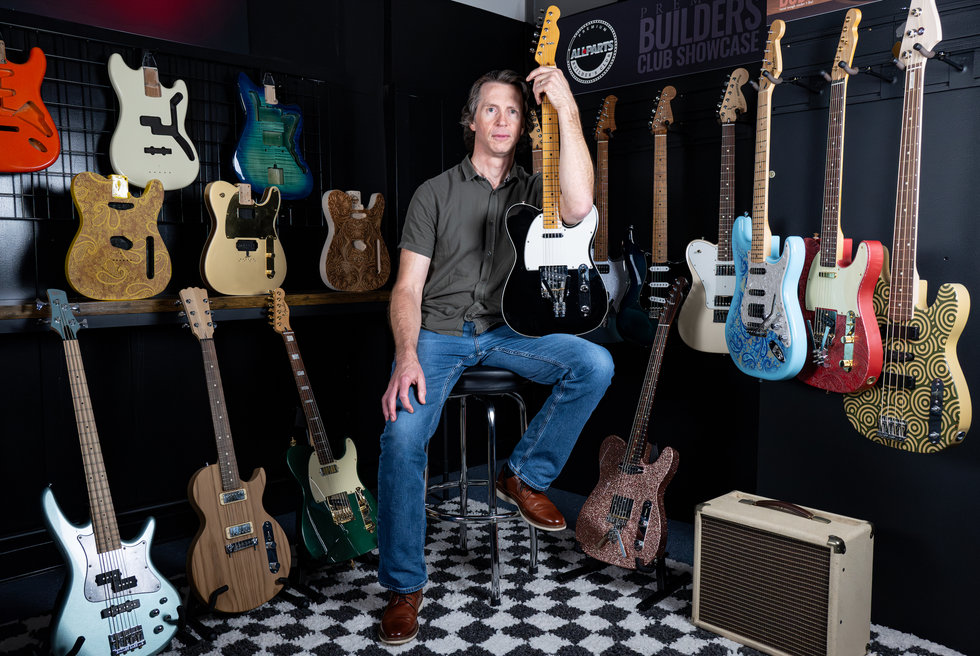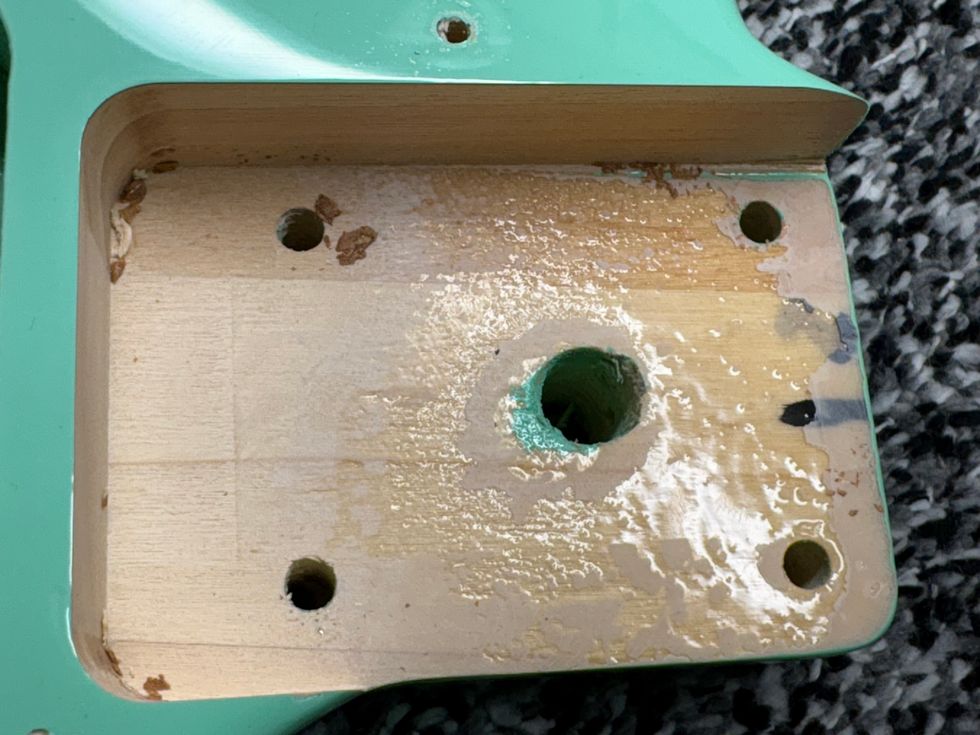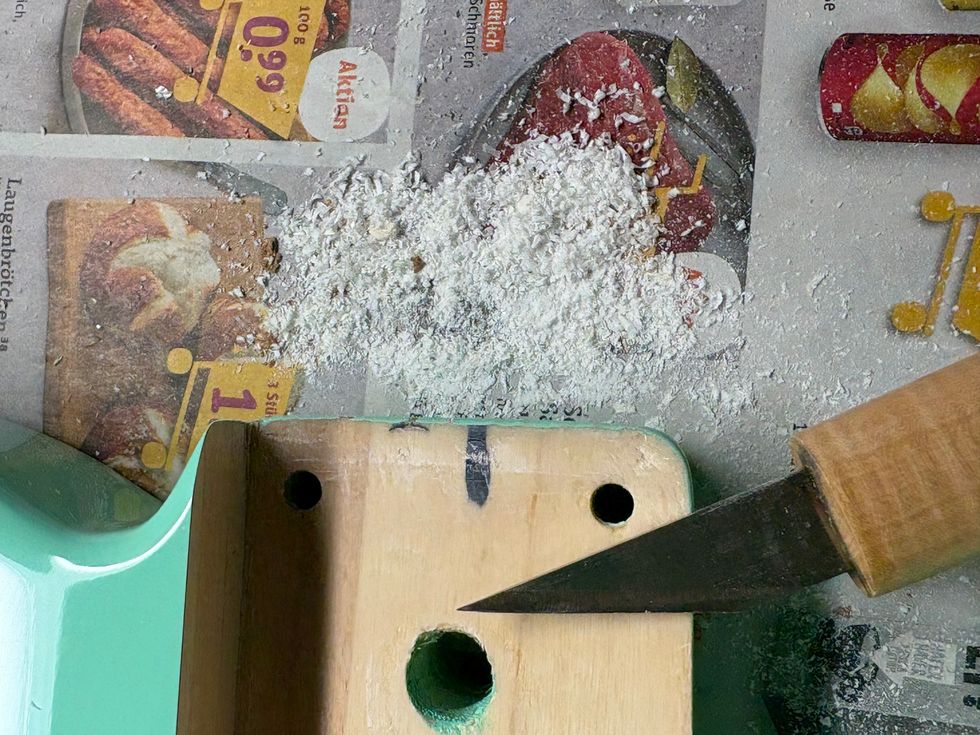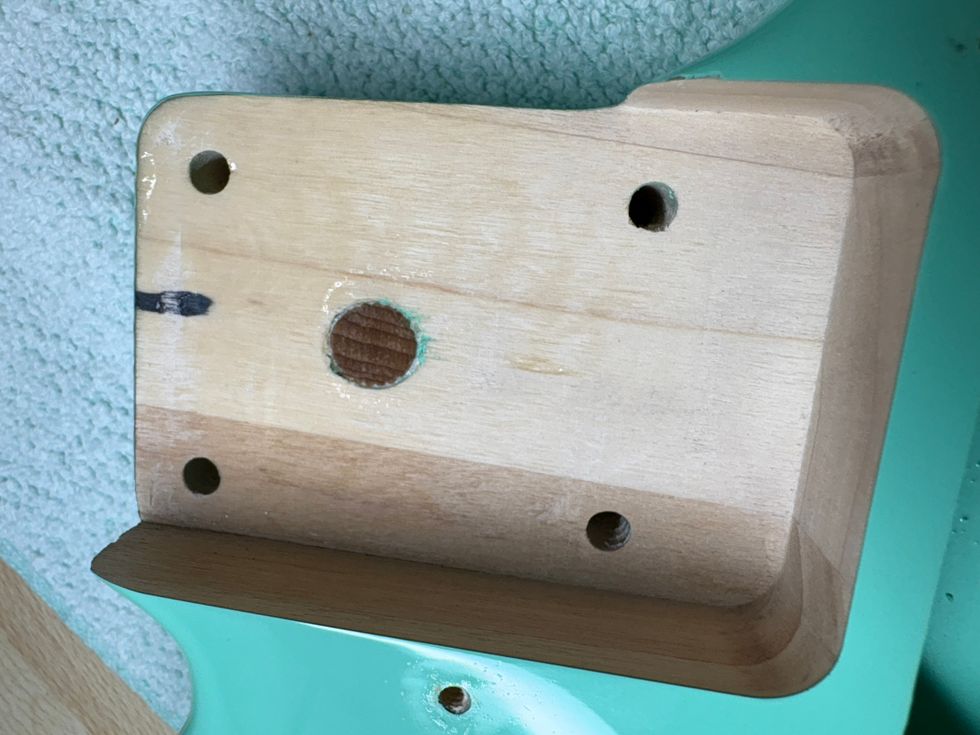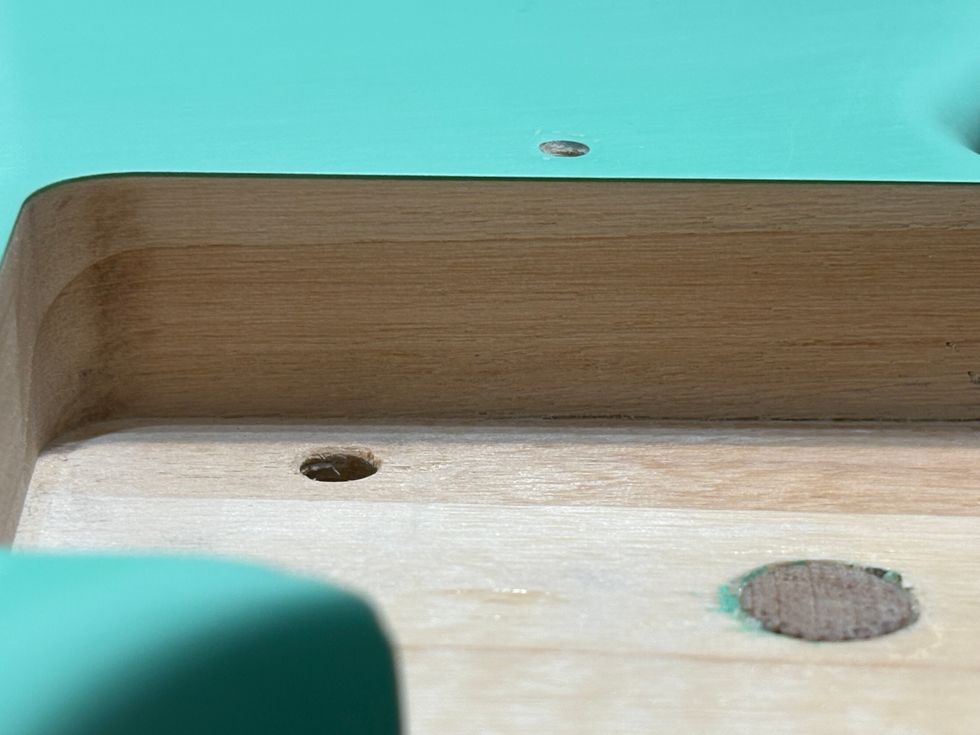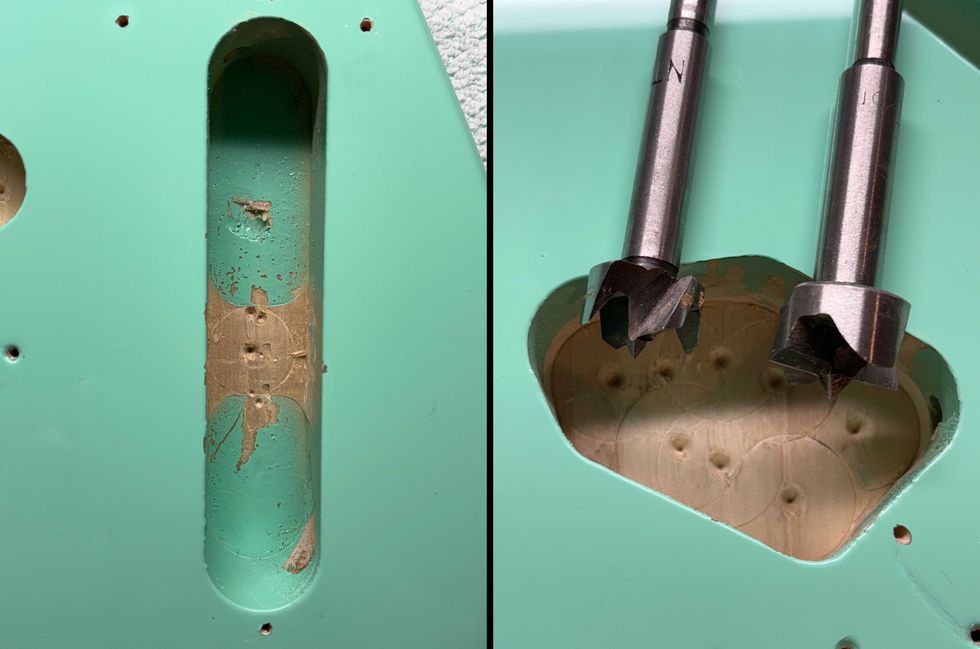Andrew Scheps earned his spot in the center of the control room the old-fashioned way: by doing whatever job needed doing for some of music’s biggest artists—and doing it well.
After starting his career as a technician for New England Digital (creators of the Synclavier, one of the first digital audio workstations/synthesizers/samplers), Scheps went on to do synthesizer programming, drum loops, Pro Tools editing, and more for artists ranging from Michael Jackson and Jay-Z to Earth, Wind & Fire and Iggy Pop. Along the way he made a connection with mega-producer Rick Rubin (Johnny Cash, Slayer, Run-D.M.C., Metallica, Tom Petty, Eminem, Adele, and many more) and began engineering many of his projects. The latest of these is Black Sabbath’s 13, the band’s first studio album since 1995, and the first full studio album featuring Ozzy Osbourne since 1978’s Never Say Die! The comeback album reached #1 on the U.S. Billboard 200 charts, debuted at #1 in Canada, and became the first chart-topping album for Sabbath in the U.K. since 1970’s Paranoid.
What was it like mixing the iconic founders of the heavy metal genre? “What was great about it,” says Scheps, “was being able to pull up faders and have it be Black Sabbath, as opposed to a band trying to sound like Black Sabbath. Nobody else plays like that.”
As a mix engineer, do you have input on how things are tracked, or does it only come to you after the tracking is finished?
Usually it’s at the end of the tracking process. That’s when they start thinking, “Hey, who should we get to mix the record?” But there have been a few records where from the beginning they’ve said, “We can’t afford you for the whole project, but we know we’re going to want you to mix. Do you want to come and hang out during the tracking or just be involved a little bit?” That can be great, though I never want to step on the toes of the person who’s actually recording. The last thing any engineer wants is someone else coming in the room and saying, “No man, you should do it that way.”
When you get the tracks, do they also send you a rough mix that was made during tracking?
Almost always. With the way Pro Tools is now, and people working in the box, the rough mixes are usually not terribly rough. They’re quite involved. I always want to get a picture of why they thought the stuff was ready to be mixed.
Is the rough mix the first thing you listen to, or do you put the tracks up first?
Usually I listen to the rough mix. There’s a lot of prep, laying the session out to get it ready to mix. So I do that while listening to the rough mix.
What’s your prep process?
A lot of it is just organizing the Pro Tools session. I mix on a console, so I split things out over multiple outputs, usually 32 to 40. I try to lay things out the same for every mix. The lead vocal is always on fader 24, and the drums always start down on fader 1 and get eight to 12 faders. Next comes bass, then guitars, then keyboards, and above fader 24 is percussion. Once I start mixing I no longer have to think about where stuff is. Color-coding is a big part of my process. The drums are always a very dark blue, the bass is a brighter blue, guitars are always green. If there are a ton of guitars, dark green is the most distorted, and light green is the most clean or acoustic. I can glance at the screen and get a fast snapshot of what’s coming up and how the arrangement plays.
How much of the process is in Pro Tools and how much is in the console?
Most of it is in the console, but there are lots of things that get mixed together in Pro Tools before they come up on the console. If someone has tracked all the guitars but hasn’t yet combined all the microphones, then that gets done in Pro Tools. The last thing I want to think about is five microphones or two different amps when it’s a single guitar performance. That guitar performance gets one fader. Most of the actual mixing happens on the console with outboard gear, but every once in a while I reach for a plug-in just because it’s a different thing.
After the prep, how do you start the mix?
Once I’ve got it all laid out and I’ve listened to the rough mix, the first 70% of mixing is getting a balance. While I’m getting the balance I’m also EQing, compressing, setting up effects, and things like that. I spend a very long time just trying to get a balance where the song plays itself. There was a reason people chose that performance of the song to mix, so presumably there’s some point with the faders all just sitting there when the balance is right, it’s exciting, and you feel why they chose that take.
Some mixers always start with the vocal. Some start with a kick drum. Do you have a process like that?
No, things come up all at once. At the very beginning, I do start with the drums, and usually the kick drum first. But I want to make the drums act like one instrument, not many tracks. I want to think about drums as drums. So I go through and make the drum kit a single instrument the same way I would if I had, say, five tracks of guitar that make up one performance. But outside of that, all the tracks have got to be in. I work my way through the instruments to discover what’s there and fix any sonic problems, but it really is everything all at once as soon as I’ve got the instruments acting as instruments.
Scheps hanging out with the Hives' Nicholaus Arson, Vigilante Carlstroem, Dr. Matt Destruction, and Chris Dangerous Photo by C. Villano
Do you view each song individually, or as part of an album?
I don’t worry about how stuff goes together. It’s almost never a problem because an album usually has common threads. The songwriting. The vocalist. A lot of times the drums have all been tracked at once. There are enough common threads that it’s almost better to find what is amazing about each song, and to discover what will be super-cool for it. It keeps the album fresh as you go. If you worry about trying to make it consistent, all that happens is you end up with a slightly more boring record.
So you start each song completely from scratch?
In terms of the source tracks and EQing, absolutely. But the outboard gear I use for parallel compression, reverb, or delay is always there. What changes is what gets sent to it on each song. I’ve got a couple of stereo things that usually work on drums. I’ve got some stuff that usually works on vocals. Sometimes I add bass to the one that’s on the vocal or … well, that’s the part that changes every time.
Most people working in home studios are working in the box. Is there any essential gear for them?
I think a control surface is essential. If you’ve never mixed with multiple faders in front of you, you’re really missing out on something awesome about mixing: being able to ride a bunch of things simultaneously and really feel how you can change the balance going into the chorus and stuff like that. In terms of audio gear, I really don’t think there’s anything essential. The stuff that Tchad Blake [engineer for Peter Gabriel, The Black Keys, Sheryl Crow, and many more] is doing completely in the box sounds so amazing that you can’t argue that you absolutely need to have an analog bus compressor or anything like that. It’s just not true.
If someone wants to put together a great home studio, what’s most important to focus on?
Well, the drag is that it is a chain of gear and then acoustics, and the weakest link is the weakest link. You don’t want to have any weak links. The speakers are critically important, as is your listening environment. If either of those is terrible, then it doesn’t matter what else you’ve got going on. But it doesn’t necessarily have to be a professionally treated room. My control room is not professionally treated. It looks like a big living room, and I love that.
How do you decide when a mix is done?
That’s a really hard question! But I always know. As I work on a mix, the one thing I want is for it to hit me emotionally. Until it’s doing that, I’m not done. I also build up a mental to-do list, whether it’s building vocal effects in the chorus, making sure the downbeat of the bridge is a big deal, or doing some panning moves. Until I’ve ticked off everything on that list I’m obviously not done. But really, I just want to hit play at the beginning of the song and be engrossed all the way to the end and think it’s awesome and want to hear it again. If I get to that point, then I’m done.
Let’s talk about 13. It’s been said that Rick Rubin wanted to recapture the vibe of the first few Sabbath records. Did you get simple sessions, as those early albums would have been, or did you get tons of tracks?
For most of the album, it’s the live tracking band plus one guitar overdub and vocals, and that’s it. I never had conversations with the band or Rick about this, but I assume he wanted to recapture the way they made their first few records really fast. As far as I know, they made the first record in two days. They just were a great band. They jammed, and that’s what was awesome about them. Obviously the vibe and lyrics and stage show were big parts of it, but they were also just a great band. Rick wanted the album to feel like those guys playing together. The arrangements absolutely speak to that. Tony [Iommi] did a bunch of overdubs. There were extra guitars and keyboards and some really cool sound effects and things. But those were always meant to sound like overdubs. They weren’t meant to finish the songs. The band tracks finish the songs. That made it really easy in some ways and really difficult in others. When you’ve got a nine-minute song where 150 things come and go, all you need to do is make sure everybody can hear all those things. When you have a nine-minute song with only bass, drums, two guitars, and vocal, you’ve got to keep everybody’s interest. It can actually end up being a little bit trickier to mix.
A Mixer’s Glossary
Automation. Using a computer to record and play back fader moves and control changes during a mix.
Bounce. To re-record a track or tracks to a new track, including any plug-ins or effects used on the original tracks.
In the box. Working entirely within a computer, using plug-ins and software tools rather than hardware processors and outboard gear.
Mixing. According to Andrew Scheps: “The mixer is the guy who gets all those performances that have already been recorded and has to make it into a stereo thing that you can put on a CD or iTunes.”
Out of the box. Using external hardware processors and mixers rather than software in a computer.
Parallel compression. A technique where uncompressed signal is mixed with a compressed version of the same signal.
Ride. To move faders while the song is playing to adjust the mix.
Rough mix. An impromptu reference mix created during the course of tracking.
Solo. To play back a track in isolation, with all other tracks muted.
Tracking. According to Andrew Scheps: “Tracking is setting up microphones and recording the performances.”
Andrew Scheps often consolidates tracks within Pro Tools so that instruments always appear on the same mixing board faders.
All the songs are quite long. Did you mix them section by section?
No, you have to do it all at once, because there’s no way to know whether it’s going to work otherwise. If I really had to change something drastically, I could automate that change in Pro Tools so that what coming up on the faders would change. For a lot of my mixing, once I turn the automation on, I start at the beginning of the song and ride a few things together all the way through. I don’t say, “Okay, now I’m going to ride this guitar in each chorus.” I like to treat it like you’re mixing front-of-house [live sound]. I sometimes overdo things and refine them later. But it gives you a great sense of the shape of the song and how it’s going to work.
The album has big guitars, often doubled, which could have made it difficult to hear the bass. But on “End of the Beginning,” for example, the bass part is active, and you can hear all the notes. How did you achieve that?
To be honest, a huge part of that is the guys’ playing, because their tones are amazing, the dynamics within their performances are amazing, and their rigs are amazing. Also, Greg Fidelman, who is a fantastic engineer, tracked the record. The tracks were great when I got them. It was just a matter of making sure that some things didn’t step on other things. Let’s say it’s two guitars going for most of the song, one hard left and one hard right, and the bass is in the middle. Immediately you’ve given yourself some room. Then finding EQs—the good thing is that the EQ where all of the notes live on a guitar is an octave up from that same spot on the bass. So you can use EQ to bring out frequencies on those instruments that don’t necessarily interfere with each other. Also, there are a lot of subtle fader moves over the course of a nine-minute song. When a bass riff appears for the first time, it’s a little louder than the second, third, and fourth times, because it’s already established, and you’ll hear it if you want to. There’s always a main instrument, whether the solo or the vocal or sometimes the bass or drums. The idea is to let those ideas be small so that you don’t necessarily think, “Wow, the bass got loud for a bar.” You just think, “Oh my God, what an awesome bass line,” then “Hey, wait, that riff was ridiculous,” then “Oh, now Ozzy sounds incredible.”
Shifting focus is a great tool. Well, it’s not really a “tool”—it’s just what everybody does when they ride faders. It’s one of the reasons I love the console. It isn’t just about turning the bass up—I might turn the guitars down a little bit to make room. But they’re very subtle moves, and they’re usually not very long.
A Selected Andrew Scheps Discography
Adele, 21
Johnny Cash, Unearthed
Black Sabbath, 13
Josh Groban, Illuminations
Red Hot Chili Peppers, I’m with You, Stadium Arcadium
Jay-Z, The Black Album, Collision Course (with Linkin Park)
Grace Potter and the Nocturnals, Grace Potter and the Nocturnals
The Hives, Lex Hives
Metallica, Death Magnetic
The Mars Volta, Frances the Mute
Weezer, Weezer (Red Album)
Another problem with dense mixes is getting the vocal to come through. Is there special processing involved?
First of all, Ozzy sounds amazing on this record. When I got the vocal tracks I was so excited. He has an amazing voice that works with guitars. All of the great rock singers have that. Chris Cornell is the same way. There’s something in his voice that is aggressive and that carries a lot of power but just cuts right through drums and guitars so it’s easy to hear. Singers do a lot of the work for you when they’re good. The vocal probably had a bit more effect on it than I would normally use, because that’s part of Ozzy’s sound. There’s some doubling, some slap delay, that kind of thing. I also use parallel compressors. I have one compressor that’s fairly aggressive so I can add a little bit more aggressiveness to the vocal when I need to. But a lot of it is just finding that static balance at the beginning, and then all of my rides work from that balance. Whatever the balance is before the faders start moving, you can hear everything. Then it’s just a matter of, what do I want to draw your attention to? What should be featured?
Was the band involved with the mixes?
Well, it’s not finished until they like it. [Laughs.] The band didn’t attend the mixes, but they were very involved in all the mixes. They all had comments. We worked together until Rick and the band were happy with everything.
You’ve mixed everyone from the Dixie Chicks’ Natalie Maines to Adele, Metallica to Neil Diamond, Red Hot Chili Peppers to Jay-Z, and now Sabbath. Do you use the same approach in all those different styles?
I think my approach really is the same. Obviously, there are differences in terms of how aggressive to make certain things sound, what you do in terms of vocal effects, and stuff like that. But in general I think of myself as kind of a rock guy, and I mix everything like a rock record. I’m trying to make everything exciting, and I’m just trying to make the emotion come out. The core of what I do is trying to get the emotion of the song out of the speakers. That’s it. The gear can change, but it’s always about the performance and the song.


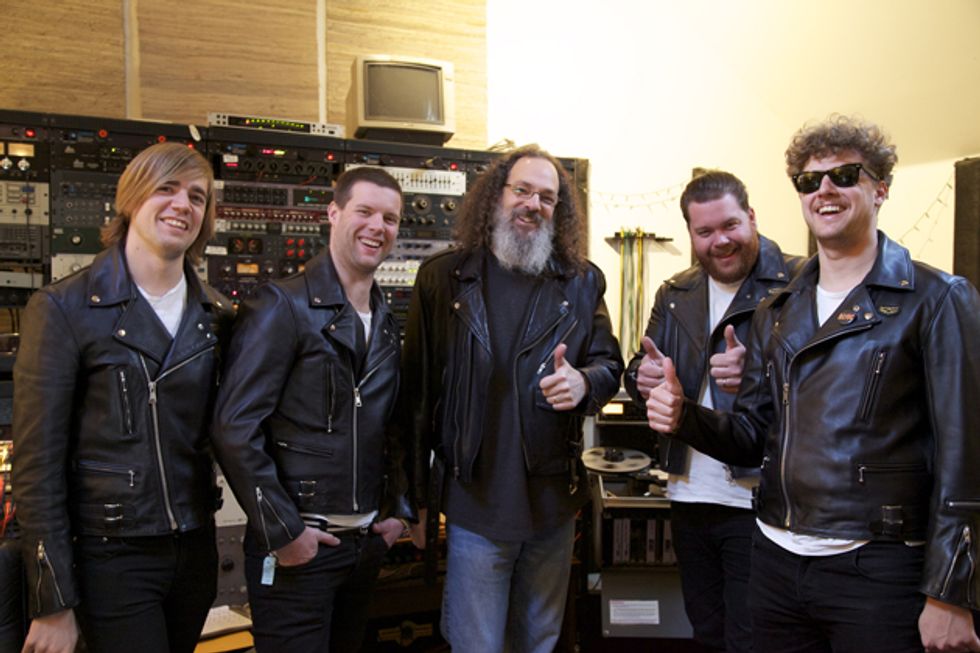
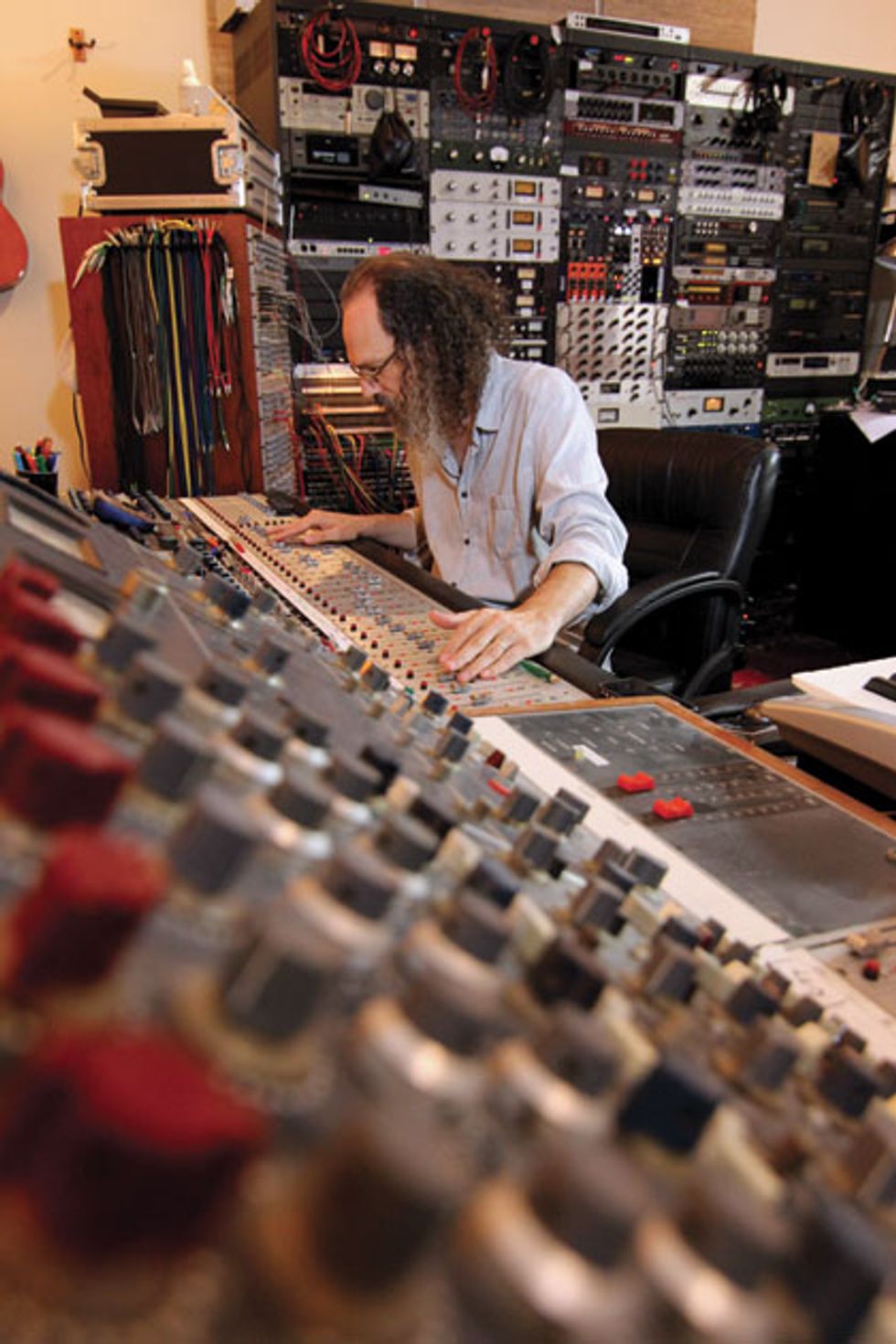
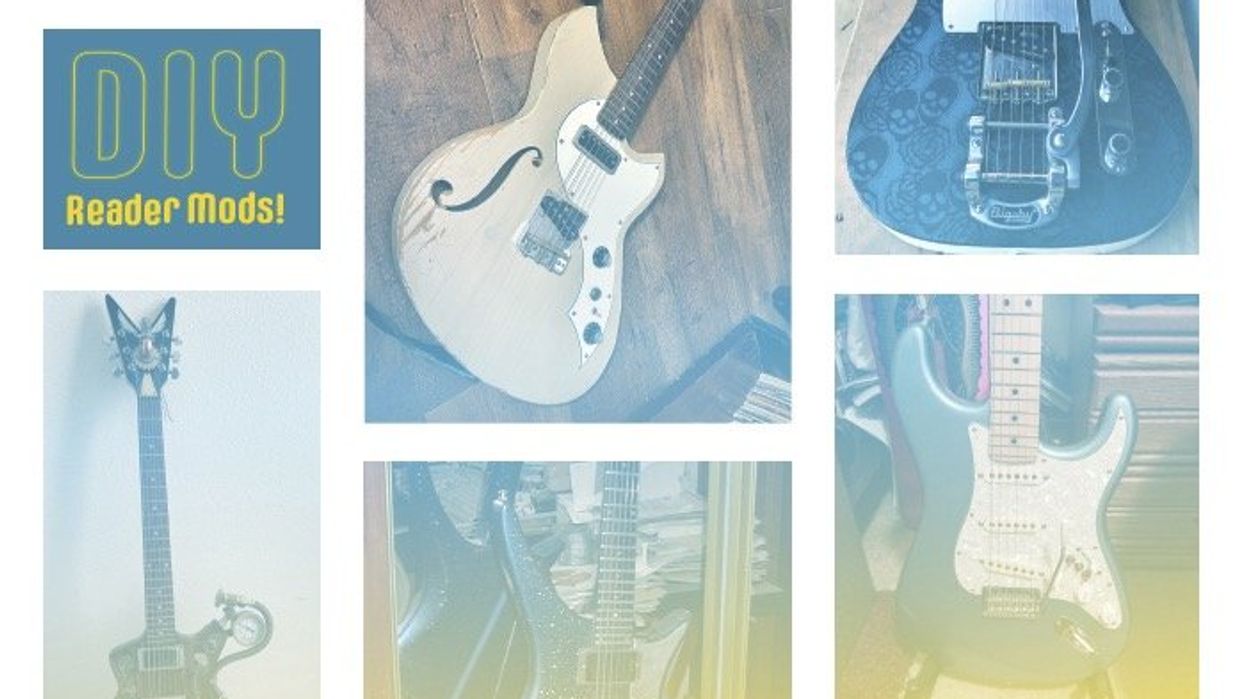
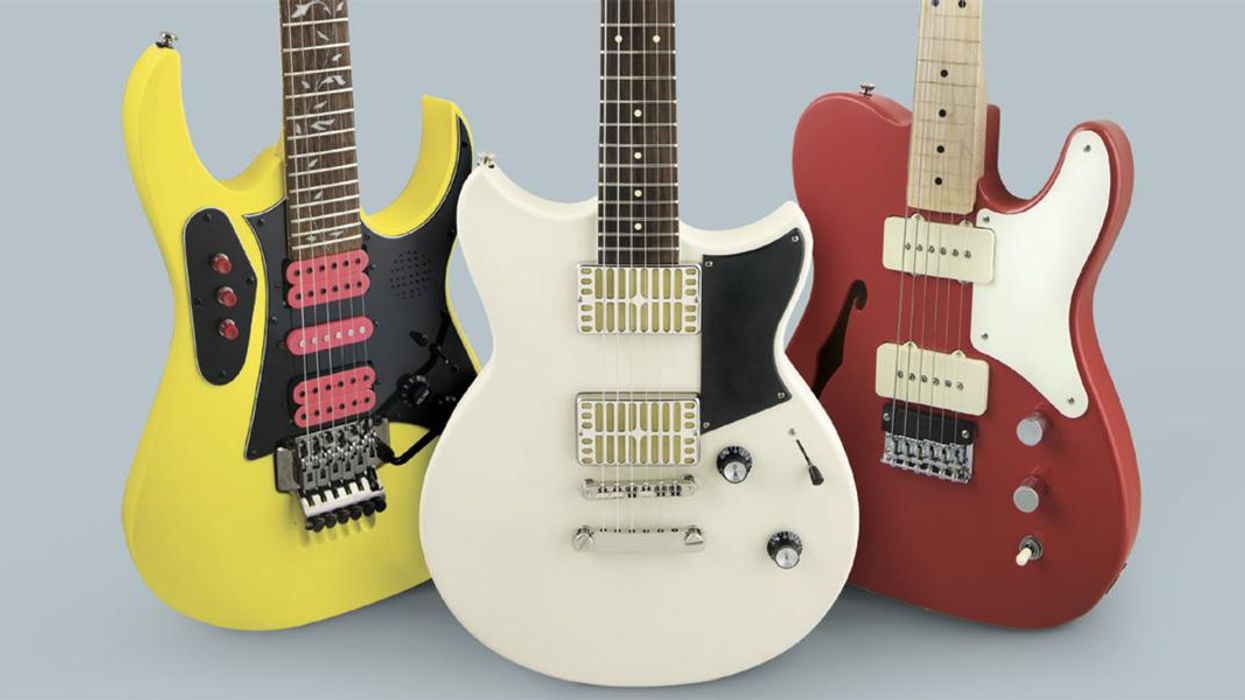
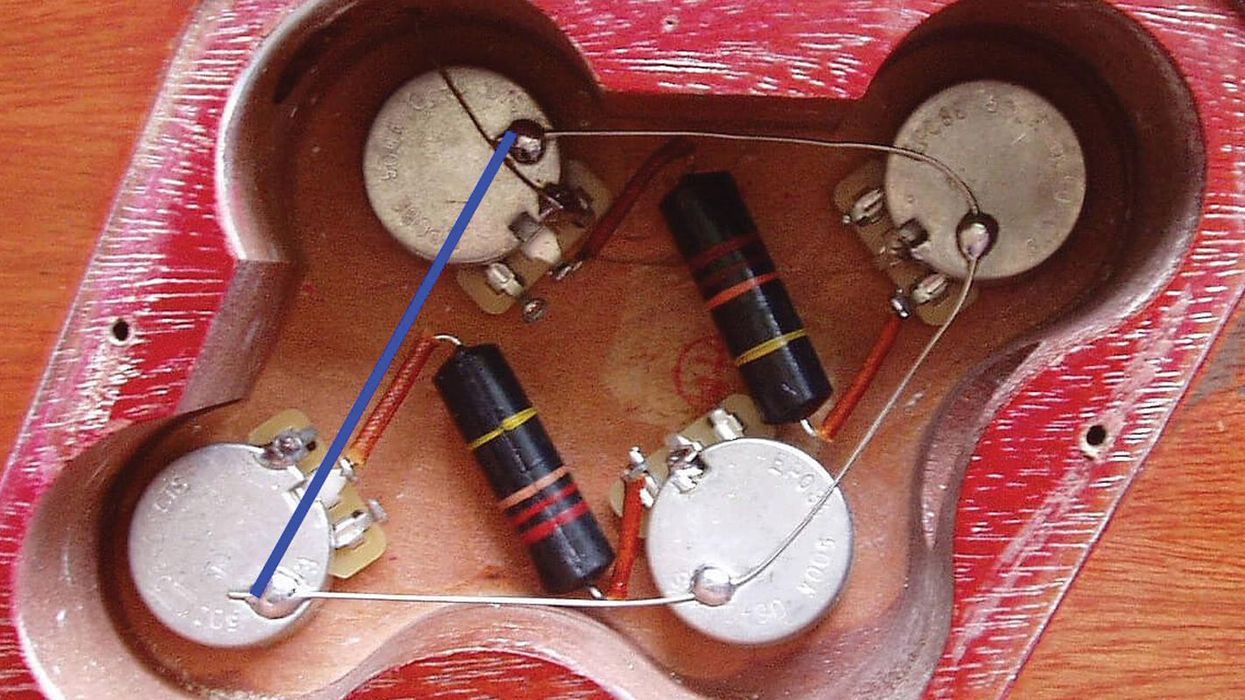
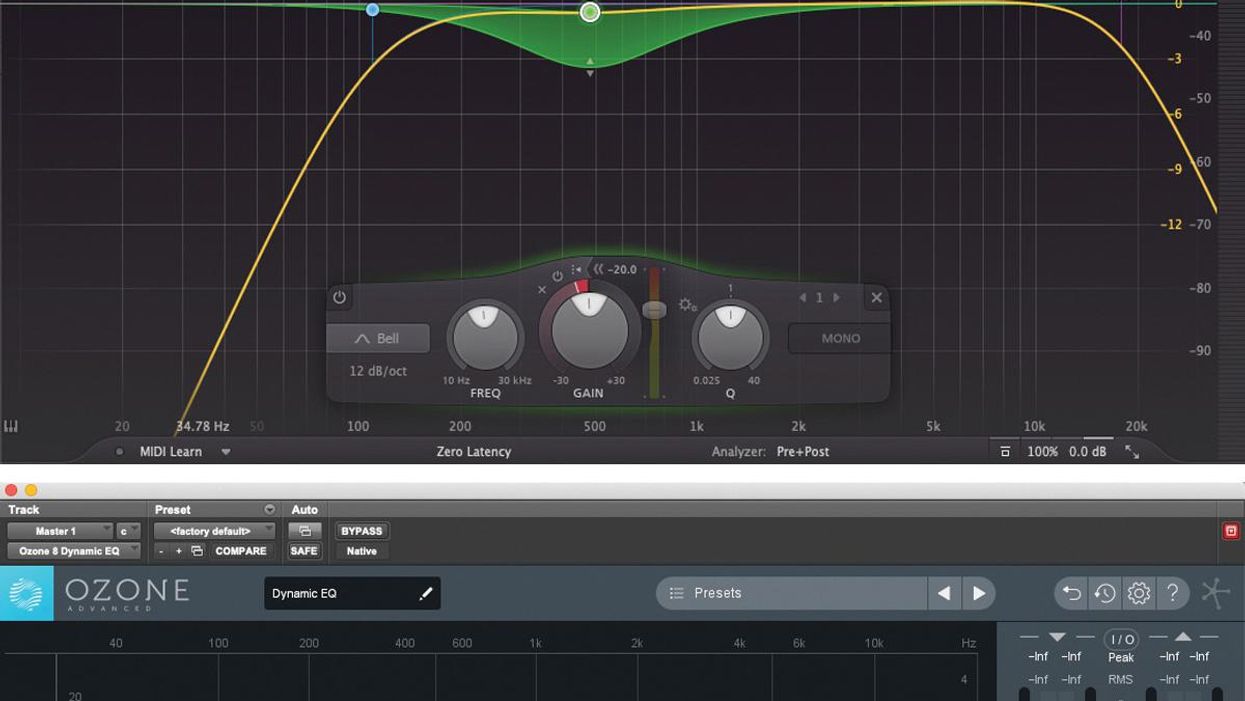







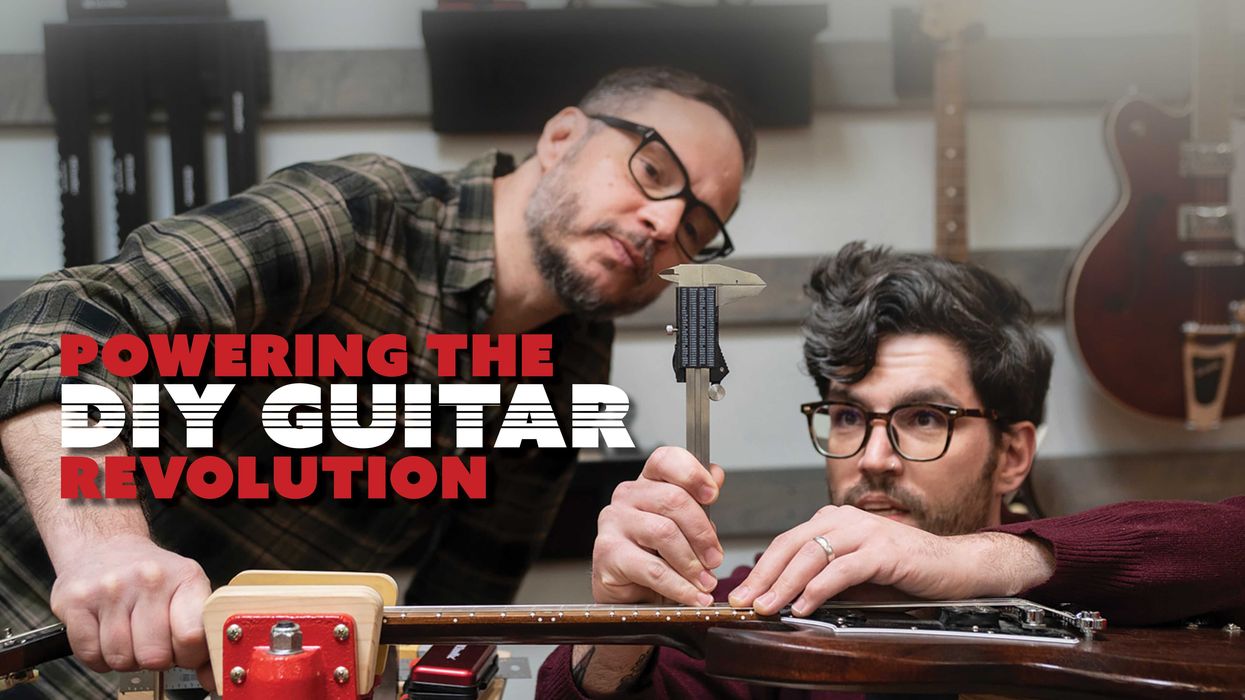
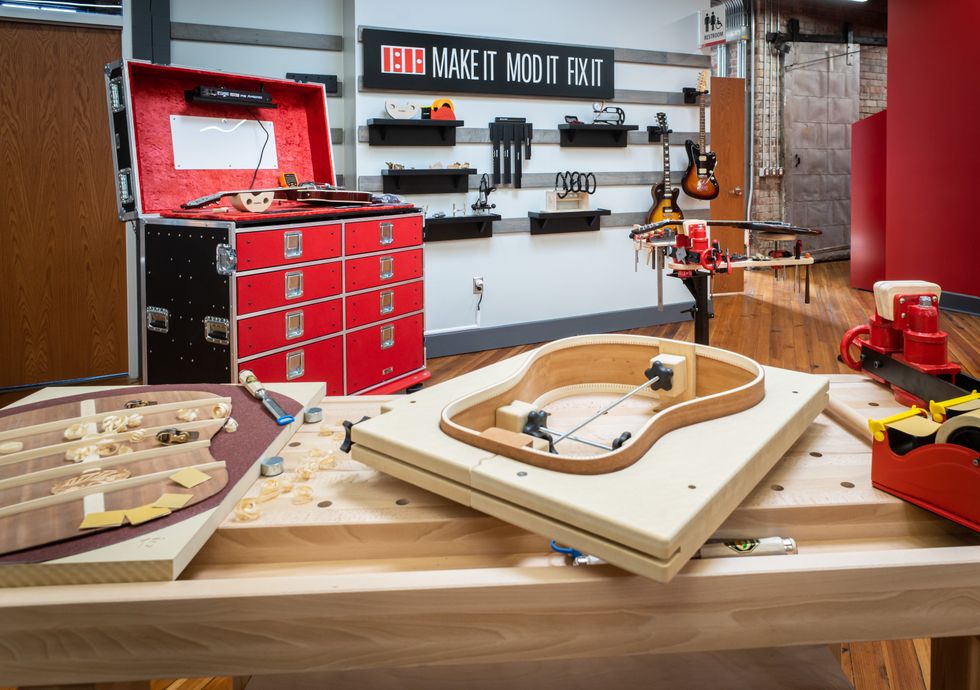
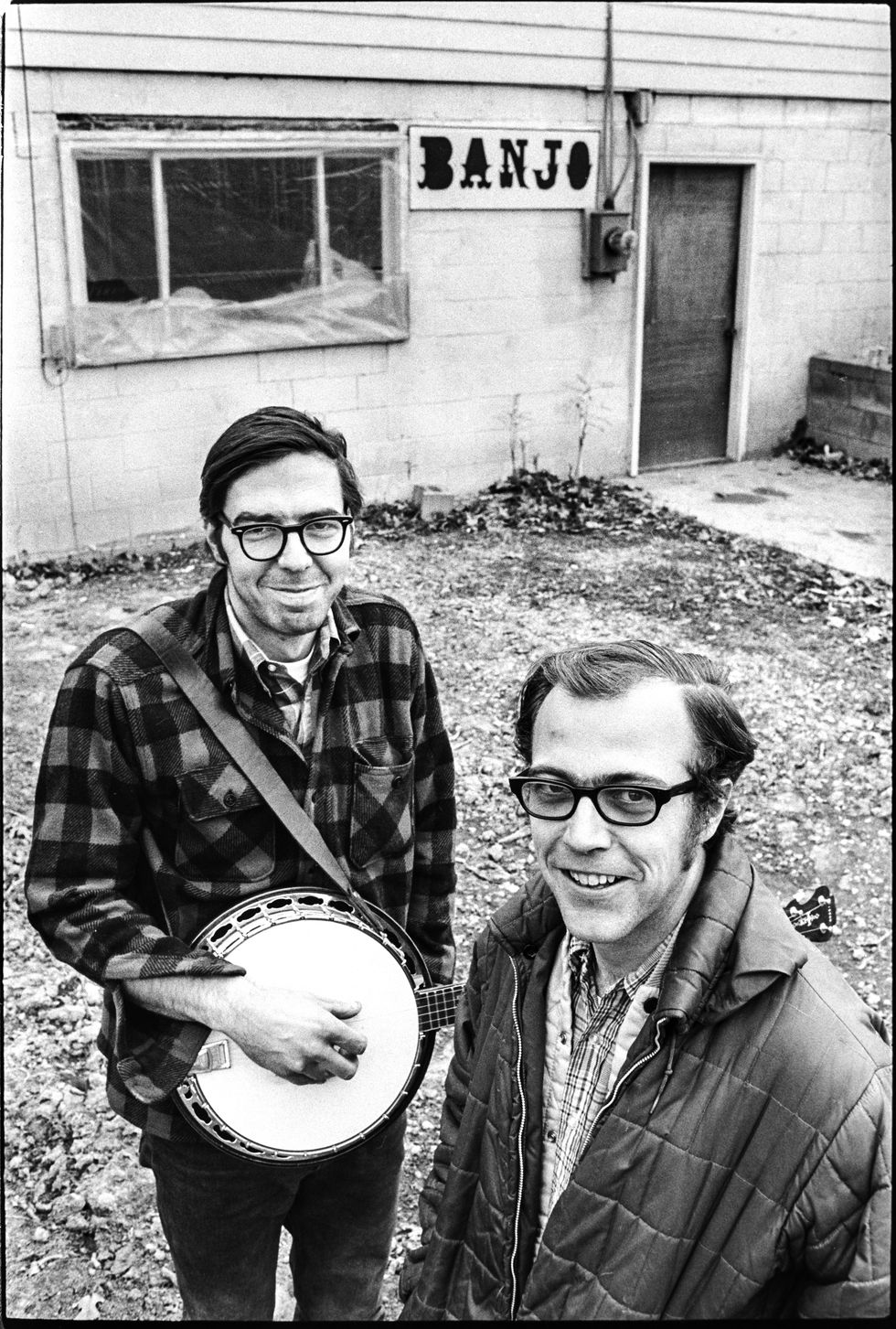
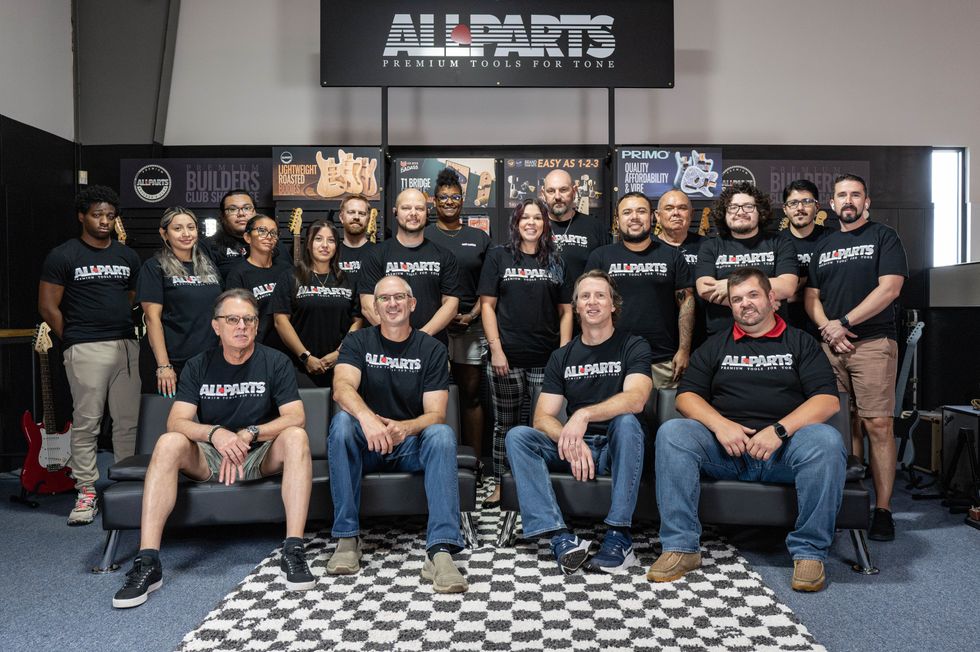 The Allparts team at their Houston warehouse, with Dean Herman in the front row, second from right.Photo by Enrique Rodriguez
The Allparts team at their Houston warehouse, with Dean Herman in the front row, second from right.Photo by Enrique Rodriguez